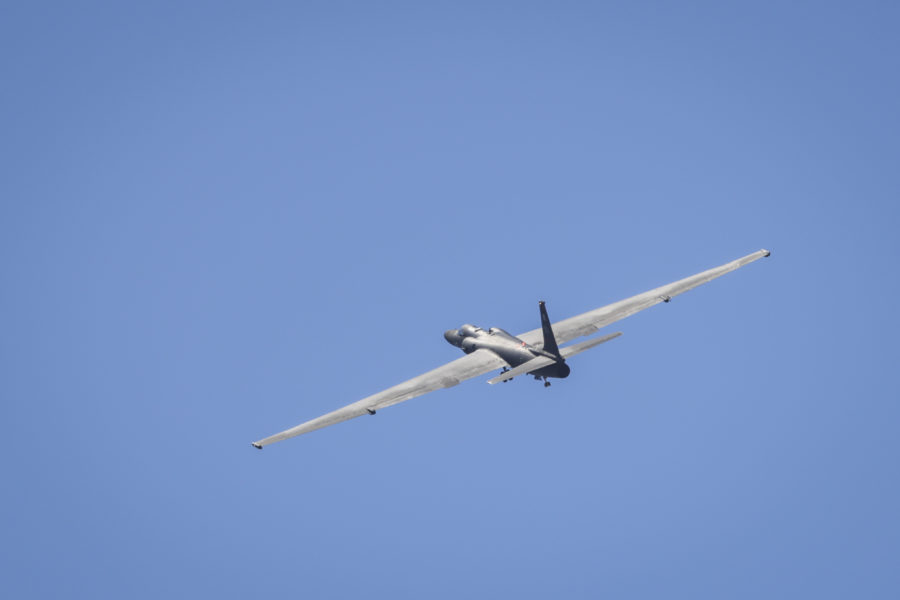Some of the most vital information about the Chinese spy balloon gathered by the U.S. military came from U-2 Dragon Lady flights over the continental United States, U.S. officials said Feb. 9.
The high-altitude reconnaissance flights enabled the U.S. to verify the balloon’s surveillance package was outfitted with multiple antennas that U.S. intelligence agencies say seem intended to collect and geolocate communications.
“High-resolution imagery from U-2 flybys revealed that the high-altitude balloon was capable of conducting signals intelligence collection operations,” a senior State Department official said.
The U-2 flights also confirmed that the craft relied on large solar panels to power its intelligence sensors.
Since an F-22 Raptor shot down the balloon off the coast of South Carolina on Feb. 4, U.S. officials have rejected Chinese claims that the craft was merely an off-course weather balloon. Rather, officials say the craft was part of a larger fleet of Chinese surveillance balloons that have been flying for years over 40 countries in five continents.
The State Department said Feb. 9 that the balloon, and others like it, were manufactured by a company with ties to China’s People’s Liberation Army.
“We know these balloons are all part of a PRC fleet of balloons developed to conduct surveillance operations,” the senior State Department official said, referring to the People’s Republic of China. “These kinds of activities are often undertaken at the direction of the People’s Liberation Army (PLA). We are confident that the balloon manufacturer has a direct relationship with China’s military and is an approved vendor of the PLA, according to information published in an official procurement portal for the PLA.”
A U.S. military official told Air & Space Forces Magazine that U-2s were flying in support of U.S. Northern Command with required legal authority to help the U.S. government collect intelligence on the intruder. The official did not specify how many U-2s took part in the missions or how many sorties took place.
The U.S. military official said in addition to the U-2, other intelligence, surveillance, and reconnaissance capabilities were used to gather information on the balloon while it was in flight, but declined to provide further details.
“Day-to-day we do not have the authority to collect intelligence within the United States of America,” Gen. Glen D. VanHerck, the head of U.S. Northern Command and North American Aerospace Defense Command (NORAD), told reporters Feb. 6. “In this case, specific authorities were granted to collect intelligence against the balloon specifically and we utilized specific capabilities to do that.”
The balloon first entered the U.S.’s Air Defense Identification Zone (ADIZ) near Alaska on Jan. 28, according to U.S. officials. NORAD continued tracking it as it entered Canada two days later before re-crossing into American airspace in Idaho on Jan. 31. According to U.S. officials, the balloon drifted near sensitive U.S. national security sites, such as Malmstrom Air Force Base, Mont., the site of Minuteman III intercontinental ballistic missile (ICBM) silos.
U-2s have conducted domestic operations in the past, flying in support of the U.S. government’s response to natural disasters such as wildfires and in the wake of Hurricane Katrina in 2005. However, as VanHerck noted, the U.S. military is not legally authorized to conduct intelligence-gathering flights over the U.S. without special permission.
The Air Force’s current fleet of 27 U-2S aircraft were manufactured in the 1980s and have a modular architecture that can carry a wide variety of payloads simultaneously, such as advanced optical equipment, signals intelligence, and more.
“We utilized multiple capabilities to ensure we collected and utilized the opportunity to close intel gaps,” VanHerck said Feb. 6.
The U-2 has a ceiling of more than 70,000 feet, which means the aircraft could have flown above the balloon, which U.S. officials said was operating at 60,000 to 65,000 feet.
“The United States sent a clear message to the PRC that its violation of our sovereignty was unacceptable by shooting down the balloon, protecting our own sensitive intelligence, and maximizing our ability to track the balloon and recover the payload to get more information on the PRC’s program,” the senior State Department official added. “The PRC’s program will only continue to be exposed, making it harder for the PRC to use this program.”
